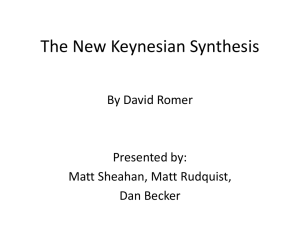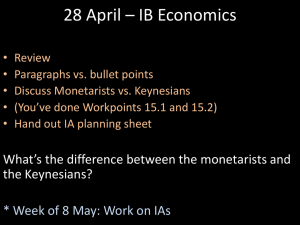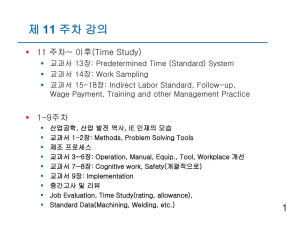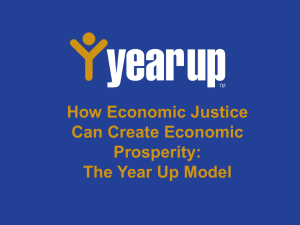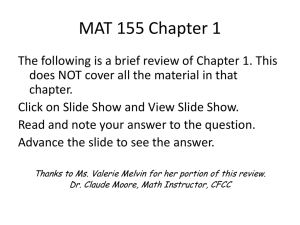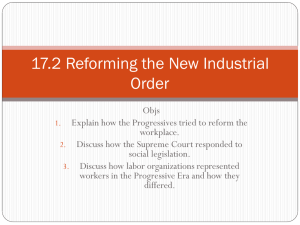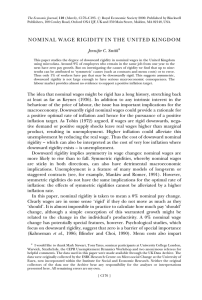The New Keynesians - College Of Business and Economics
advertisement
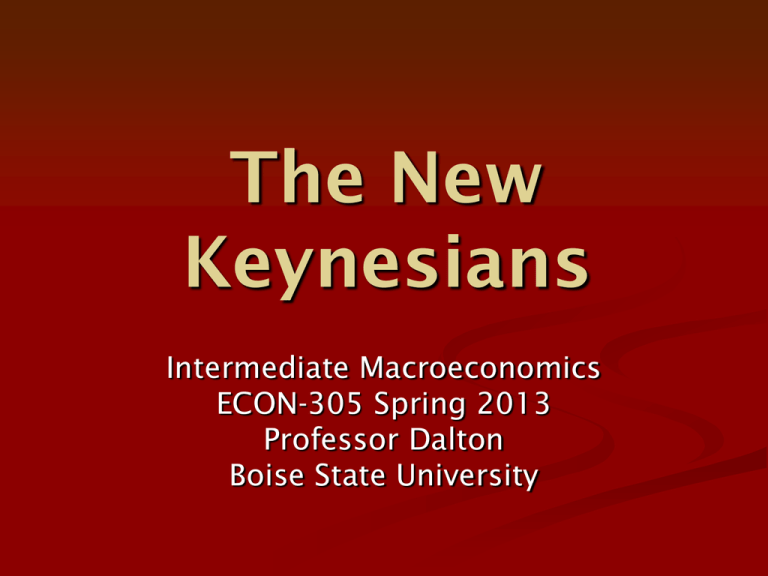
The New Keynesians Intermediate Macroeconomics ECON-305 Spring 2013 Professor Dalton Boise State University The Death of Keynesianism Orthodox Keynesianism suffered attacks in 1950s and 1960s from Monetarism Weathered storm Incorporated ideas into the neo-classical synthesis New Classical attacks of 1970s more damaging Poor performance of stable Phillips Curve Theoretical inconsistencies The Death of Keynesianism Lucas and Sargent, “After Keynesian Macroeconomics,” in After The Phillips Curve… (1978) Fundamental Problems of Orthodox Keynesianism (1) Inadequate micro-foundations which assume markets don’t clear (2) Use of expectations inconsistent with maximizing behavior (adaptive rather than rational) After Keynes and Lucas New Classical and RBC macroeconomics resolved tension between neoclassical micro and Keynesian macro by abandoning latter. Alternative Approach – rebuild micro foundations of Keynesian macroeconomics New Keynesian Economics New Classical and RBC models, despite their theoretical elegance, fail to “square” with fundamental observations concerning business cycles Orthodox Keynesian models, adapted for supply shocks, do pretty well in accounting for most (not all) business cycle facts, but lack micro-reasoning to help understanding Essential Task of Macro “The co-ordination question, simply stated, is this: Will the market system ‘automatically’ co-ordinate economic activities? Always? Never? Sometimes very well but sometimes pretty badly? If the latter, under what conditions, and with what institutional structures, will it do well or do badly? I regard these questions as the central and basic ones in macroeconomics.” - Leijonhufvud, “Keynesian Economics: Past Confusions, Future Prospects,” in Vercelli and Dmitri, eds., Macroeconomics: A Survey of Recent Strategies NK Research Program The Difference In classical models, the world is characterized by continuous marketclearing In Keynesian models, there is an absence of continuous market-clearing NK Research Program If do away with CMC, better have good reasons. New Keynesians attempt to provide microfoundations for absence of CMC, rather than just assume it. CMC fails when prices and wages are rigid. Therefore, New Keynesians attempts a microeconomics of price and wage stickiness. NK Research Program Central Aspects (1) Construction of a theory of AS based upon wage and price rigidities. (2) Construction of models of wage and price rigidities based on maximizing behavior and rational expectations. However… New Keynesian School? “Genuine school in our sense: There was one master, one doctrine, personal coherence; there was a core; there were zones of influence; there were fringe ends.” - Schumpeter, History of Economic Analysis, p. 95. New Keynesian School? “a school … is a collection of affiliated scientist who display a considerably higher agreement upon a particular set of views than the science as a whole displays.” “A school must have a leader …[and] consensus upon substantive scientific views.” - Stigler, “Does Economics Have a Useful past?” The Economist as Preacher, p. 116. New Keynesian School? New Keynesian economists are an extremely heterogeneous group New Keynesian economists hold a wide diversity of views regarding policy There is no single, unified, new Keynesian Model Even disagreement over the importance of wage and price rigidities!!! Leading New Keynesians Gregory Mankiw (Harvard) Lawrence Summers (Harvard) Olivier Blanchard (MIT) Stanley Fischer (MIT) Joseph Stiglitz (Columbia) Ben Bernanke (Princeton, Federal Reserve) George Akerlof (Cal-Berkeley) Janet Yellen (Cal-Berkeley) David Romer (Cal-Berkeley) John Taylor (Stanford) Core Propositions Mankiw and Romer, New Keynesian Economics (1991) (1) Is money non-neutral? (2) Are real market imperfections crucial for understanding economic fluctuations? Only New Keynesians (among mainstream) answer Yes to both. Core Propositions Summary View of New Keynesianism “Economic fluctuations arise from monetary non-neutrality occurring because of [sticky prices arising from] real market imperfections.” Core Propositions (1) Firms are price-makers (2) Rational expectations (usually) (3) Both demand and supply shocks are sources of instability (4) Incomplete markets and asymmetric information Nominal and Real Rigidities Nominal rigidity occurs when something prevents nominal prices or wages from adjusting to meet changes in demand or supply Real rigidity occurs when something prevents real wages, real prices, or relative prices from adjusting to meet changes in demand or supply Nominal Rigidities Nominal wage rigidity Nominal price rigidity Nominal Wage Rigidity Long-term labor contracts Agents Ratex Money supply changes more frequent than contracts negotiated Monetary Policy can have real effects Micro rationale for long-term labor contracts Wage negotiations costly for both workers and firms Nominal Wage Rigidity Potential costs from strikes due to negotiation breakdowns Not optimal to change W immediately; if other firms don’t follow, increased labor turnover Why not COLAs? In world of imperfect info firms can gain vital information by observing wage/price changes of other firms PROBLEM: counter-cyclical real wages predicted Nominal Price Rigidity PAYM insight Parkin, Akerlof, Yellen and Mankiw “In price-maker markets, small costs to price adjustment can generate aggregate nominal price rigidity.” Akerlof and Yellen, “A Near-Rational Model of the Business Cycle, with Wage and Price Inertia,” (1985) Mankiw, “Small Menu Costs and Large Business Cycles: A Macroeconomic Model of Monopoly,” (1985) Parkin, “The Output-Inflation Tradeoff When Prices Are Costly to Change,” (1986) Nominal Price Rigidity Menu Costs Idea Physical costs of resetting prices and management expense in supervising and renegotiatiing purchase and sales contracts Profit-maximizing firms and Menu costs When D falls, should price-maker cut price or not? Nominal Price Rigidity Macro Consequences of Answer w/out Menu costs Profit-maximization results in all firms reducing prices and therefore costs of inputs fall. MC decline, leading to further P declines and real money balances increase. Real interest rate falls, AD increases, and full employment is re-established. With Menu costs Costs of inputs don’t decline and economy remains stuck in underemployment equilibrium Nominal Price Rigidity Micro rationale for long-term price agreements (set menu prices) Economize on firm’s resources Reduce uncertainty of potential transactors PROBLEMS: Ignores costs of output adjustment; Fails to explain why some prices are more flexible;To get large aggregate effects requires implausible values for demand elasticity and marginal cost elasticity Nominal Rigidity and AD/AS P W LRAS SL SRAS W0 DL AD1 L1 L0 Y L Y AD0 Y Y=Y DLe L Y Real Price Rigidity Implicit oligopolistic collusion “Thick market” externalities “Customer” markets Asymmetric information in capital markets Price-Quality Judgments Imperfect Information and InputOutput Complexity Real Wage Rigidity Implicit Labor Contracts “Efficiency Wages” Adverse Selection Labor Turnover Shirking Fairness “Insider-Outsider” Theory NK Business Cycle Theory Demand and Supply shocks combine with frictions and imperfections within economy to produce non-neutralities that amplify shocks resulting in large output and employment fluctuations Predominant approach focuses on rigidities Hysteresis and Unemployment Hysteresis: path-dependency Idea that the natural-rate of unemployment at any given point in time depends upon the path of past unemployment rates If actual unemployment rate exceeds the natural rate, the natural rate rises (and vice versa) Why? Duration Theories (Structural) and InsiderOutsider Theories (Wage Rigidity) Policy Implication: the sacrifice-ratio is much larger than suggested by original Phillips Curve literature NK and Stylized Facts (1) (2) (3) (4) Consistent with pro-cyclical L, C, I, G, and Y/L Non-neutrality of money consistent with leading pro-cyclical money NK predicts inflation pro-cyclical and lagging With sticky nominal prices, real wage can be pro-cyclical or acyclical Policy Implications Sticky prices and monetary nonneutrality re-establishes policy effectiveness Eclectic Nature of New Keynesian Policy Prescriptions Criticisms of New Keynesianism Lack of empirical support Numerous theories Doubt on importance of menu costs Denial that efforts accurately portray Keynes Acceptance of rational expectations Continued reliance in IS-LM to understand AD Distinguishing Beliefs 1. 2. Economy subject to irregular and unpredictable shocks from both demand and supply, and economy slow to adjust due to nominal price and wage rigidity Equilibrium consistent with involuntary unemployment is due to real price and wage rigidity that itself is result of rational maximizing behavior Distinguishing Beliefs 3. 4. Short-run tradeoff exists between unemployment and inflation due to the non-neutrality of money in a world of price and wage rigidity In principle, activist Monetary and Fiscal policy can return economy to full-employment output, but policy should be aimed at offsetting major rather than minor problems “Coarse-tuning” rather than “fine-tuning”
